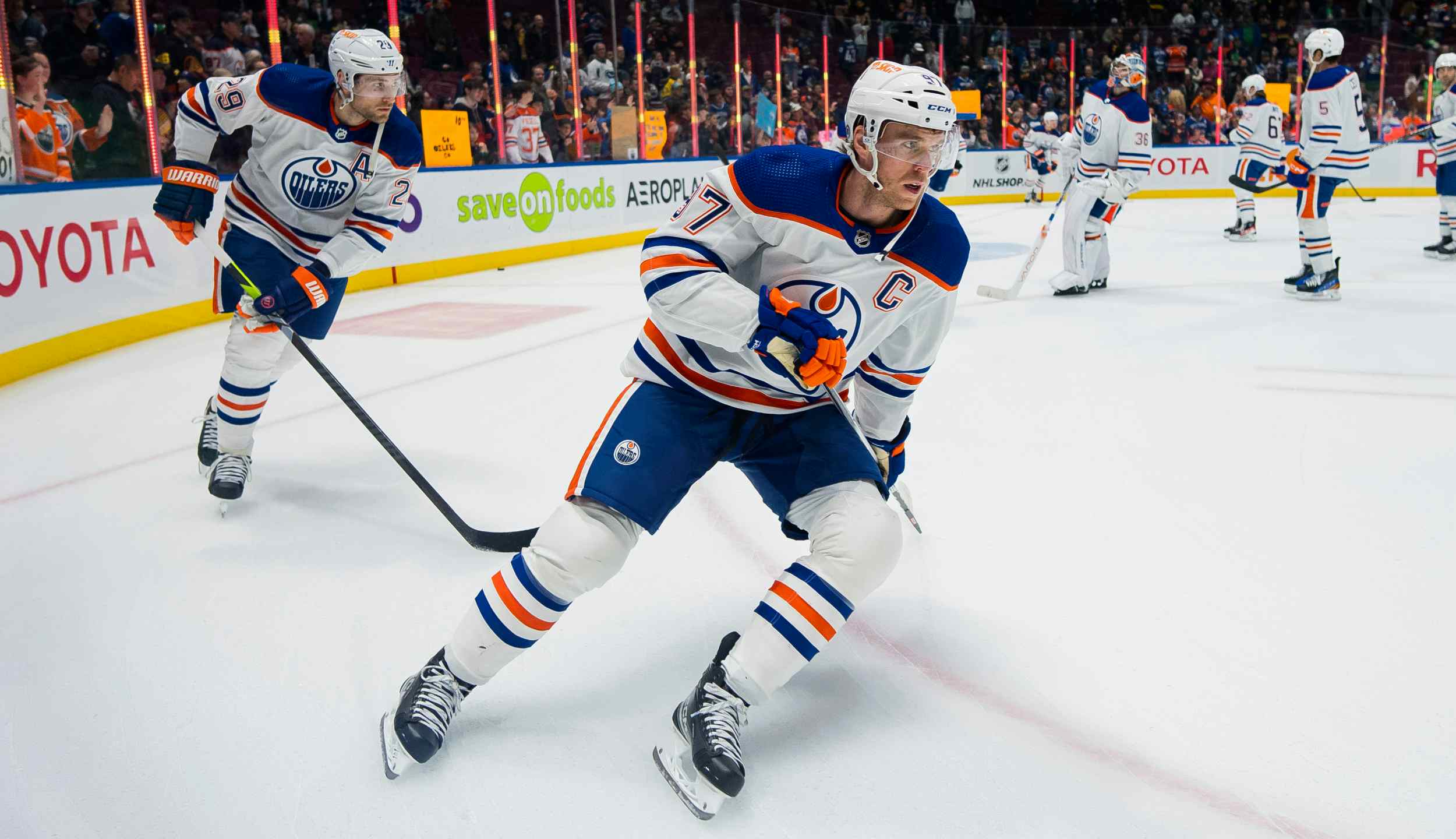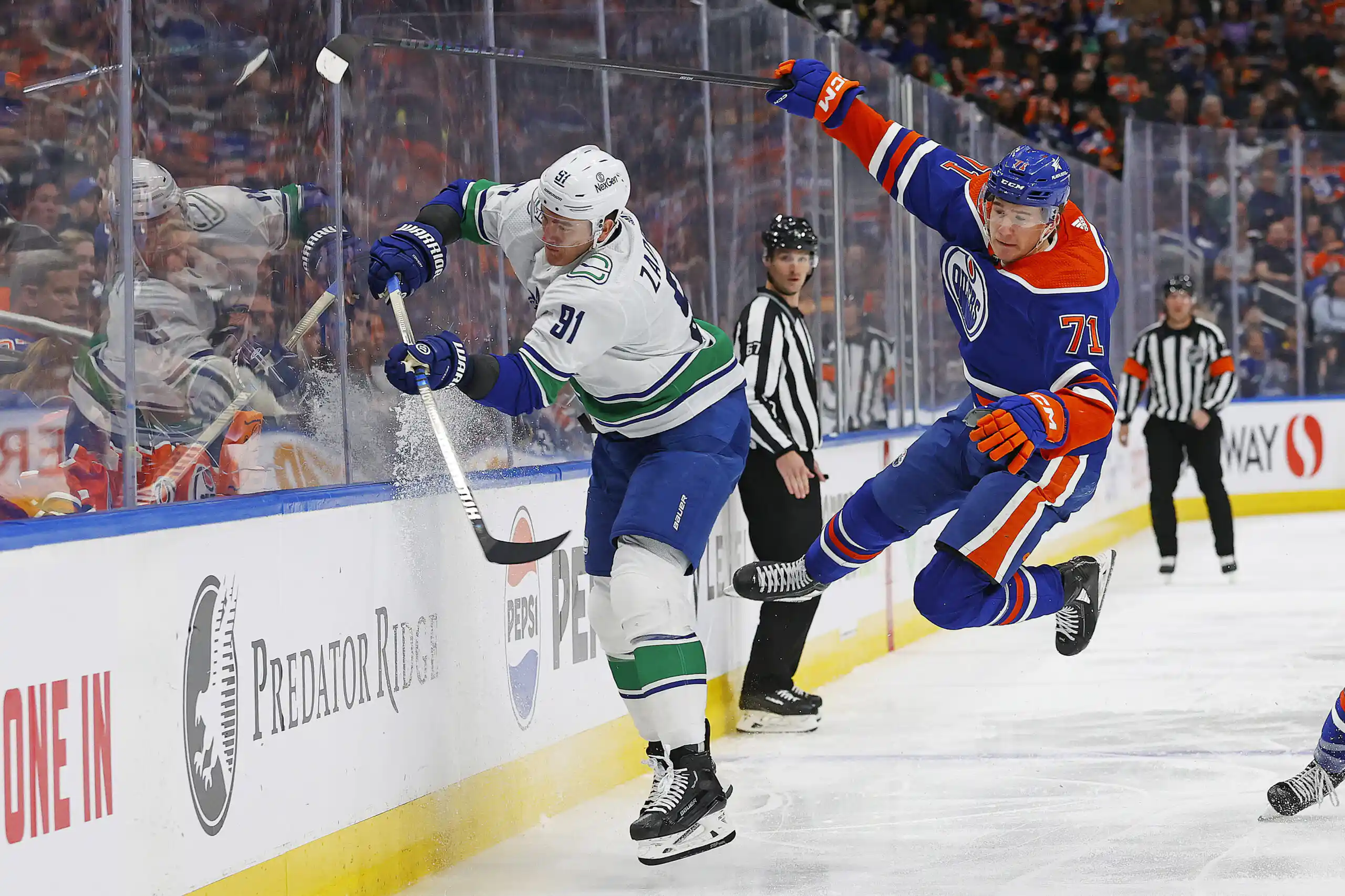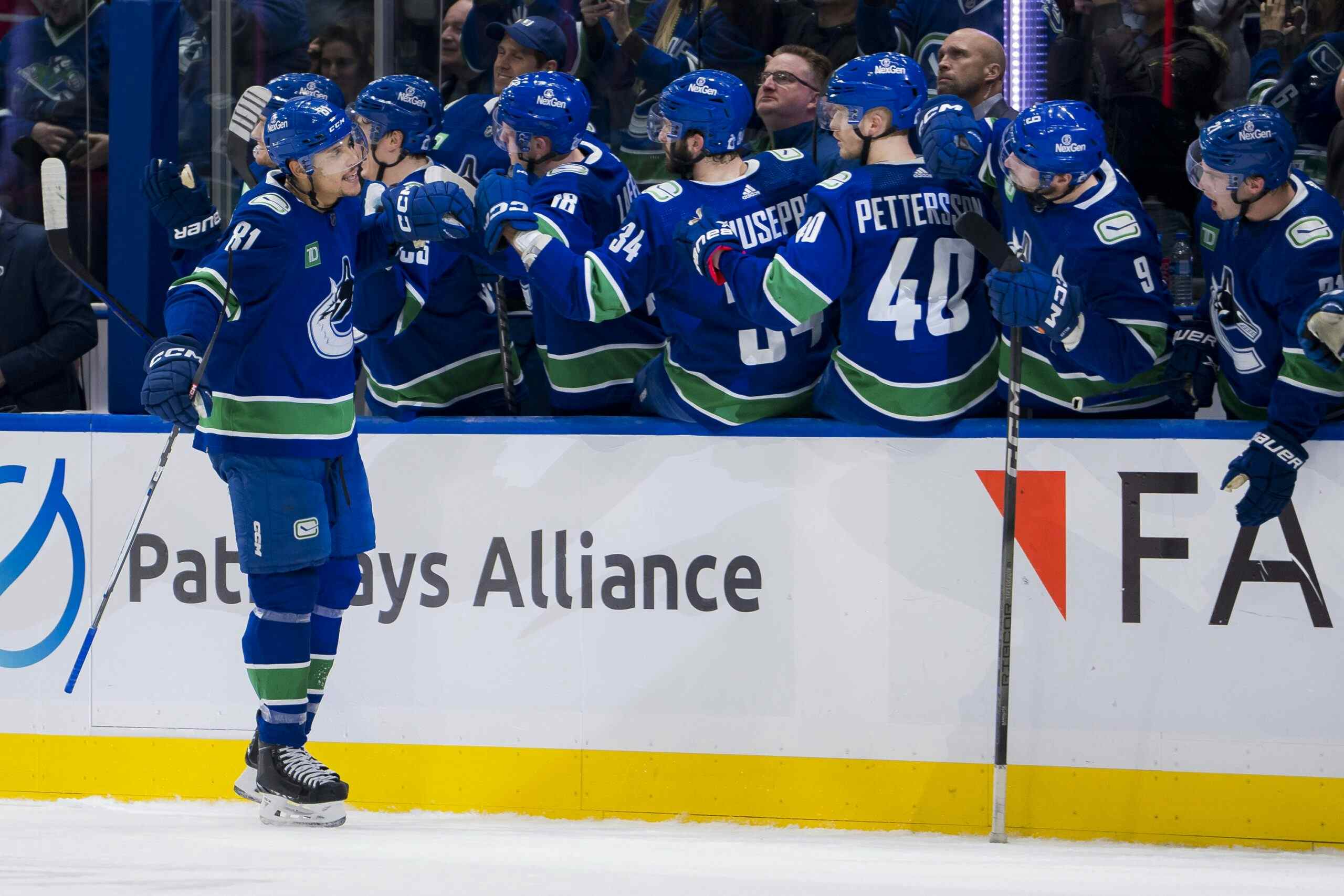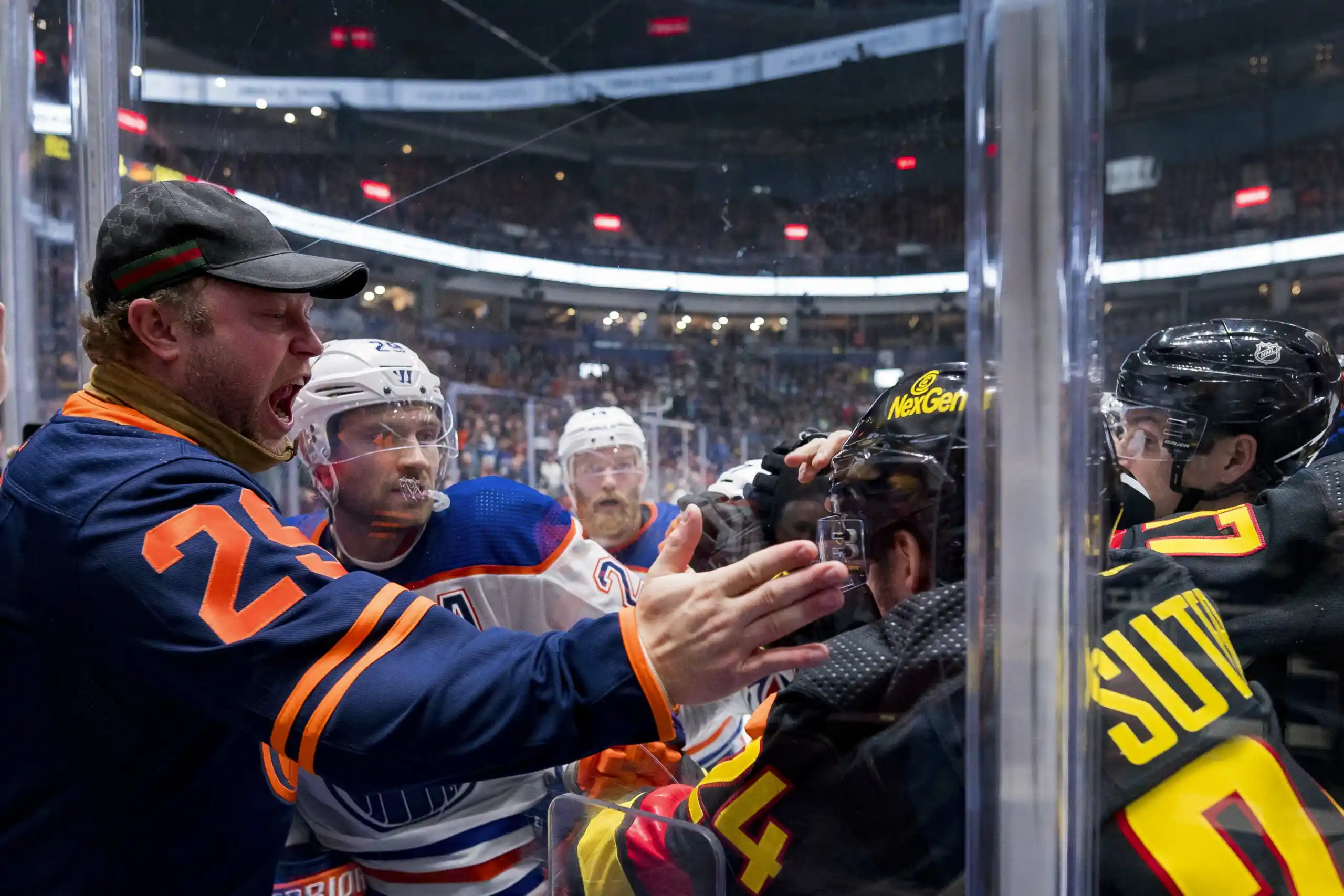The Oilers are different team since splitting McDavid, Draisaitl, and Nugent-Hopkins
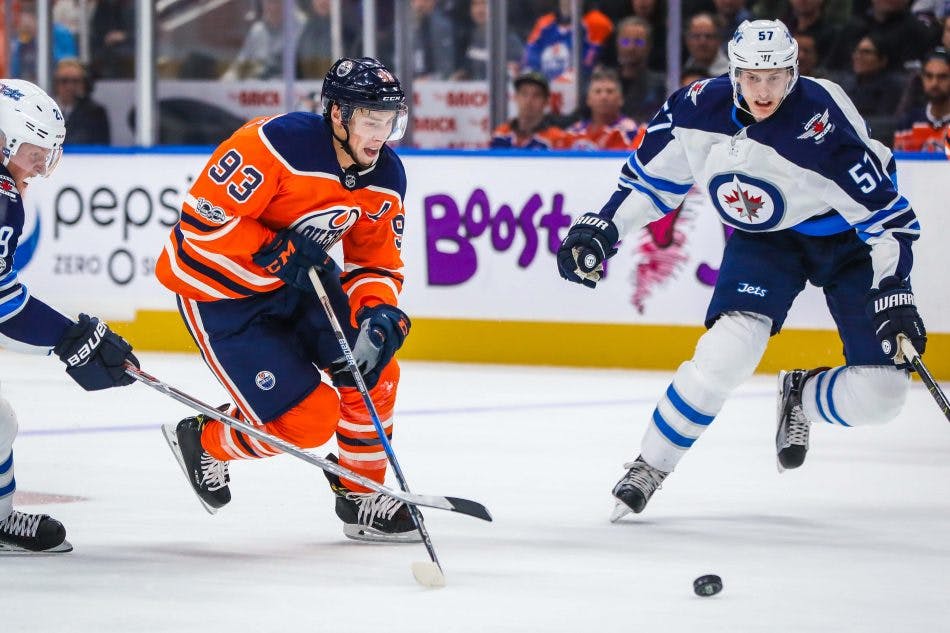
By Cam Lewis
6 years agoThe Oilers got off to a terrible start to the season and, as a result, dug themselves a massive hole that’ll be incredibly hard to overcome. Despite routinely outshooting opponents, the Oilers were having a difficult time scoring and keeping the puck out of the net, which obviously isn’t a recipe for success. The team was only really generating high-quality offence when Connor McDavid was on the ice and couldn’t get any depth scoring to save their lives.
But in the last month, the Oilers are looking a lot more like the team that finished second in the Pacific Division in 2016-17. In their last 12 games, Edmonton is 8-4-0, which is good for a .667 possible point percentage. That’s about the level the team is going to have to operate at in order to hit the 94-point threshold, which is what will likely be the cutoff for a playoff seed in the Western Conference.
Sean Tierney put out a chart before Edmonton’s game against St. Louis that tracks the team’s expected goals for percentage in comparison to their actual goals for percentage over time. They started well, went into a lull, and have since pulled out of it. Throughout the entire season Edmonton has had strong underlying numbers, but only now are they regressing to the norm and areseeing actual results.
What changed? The last month isn’t just an arbitrary date cutoff I picked in order to prove a point. Back on Nov. 26, after an infuriating loss to the hapless Buffalo Sabres, Todd McLellan finally made a lineup change many Oilers fans had been screaming for all season. He split Connor McDavid, Leon Draisaitl, and Ryan Nugent-Hopkins, allowing the team’s top three centres to carry their own lines.
Since that change was made on Nov. 26, the Oilers are tied for second in the league in wins with eight. Only the Los Angeles Kings and Tampa Bay Lightning have more, and they’re tied with the Capitals and Bruins. No team has scored more goals at even strength over that span than the Oilers have. In the first 23 games before running three centres, the Oilers had a paltry 41 goals at even strength and 49 goals against. In the 12 since, they have 33 for and 21 against.
I think a part of that also comes down to the team gelling after an ugly start to the season that they perhaps didn’t take as seriously as they should have. I also think another issue came down to Connor McDavid dealing with an illness that hindered his play. But the biggest factor to Edmonton’s turnaround has been splitting McDavid, Draisaitl, and Nugent-Hopkins.
Let’s look at the individual performances of these players since the change on Nov. 26. This is Corsi For percentage, Fenwick For percentage, Goals For percentage, PDO, and average time on ice at even strength:
- McDavid: 53.95 CF%, 55.97 FF%, 81.25 GF%, 1.083 PDO, 14:59 ATOI
- Nugent-Hopkins: 53.90 CF%, 55.16 FF%, 57.14 GF%, 1.003 PDO, 12:18 ATOI
- Draisaitl: 52.31 CF%, 53.23 FF%, 58.33 GF%, 1.019 PDO, 12:26 ATOI
While there’s a little bit of cross over from when two of these players are on the ice at the same time, the Oilers ultimately have three centres driving play at a positive pace. All three are generating more shot attempts and shots on goal than their opponents and they’re actually converting on their chances. McDavid’s PDO (on-ice shooting and save percentage) is obviously unsustainable, but this is a group that occupies around 40 minutes of even strength ice time per game and dominates the other team.
Traditional knowledge suggests that you can’t run more than two scoring lines. You roughly have a top-six that scores and a bottom-six that defends. But the Oilers have the luxury of having three very good centres who can all play a 200-foot game and that’s what we’re seeing here.
How do you line match against this? The Sharks can put out Joe Pavelski against McDavid and he reigning MVP can be completely shut down, but then you have to worry about another 25 even strength minutes of Nugent-Hopkins and Draisaitl driving the game in the Oilers’ favour.
Like I said, the Oilers have had strong underlying numbers all season, but the goal results haven’t matched the shot attempt results until now. I feel that with the team firing three lines capable of scoring out in waves, they make it much more difficult for the opponents to execute a shutdown strategy. Now we’re seeing the team not only generate chances, but finish as more often than not, there’s a favourable on-ice matchup between a good Oilers centre and a mediocre opponent defenceman.
Like here, for example. The Sharks line-matched their superb shutdown pair of Marc-Edouard Vlasic and Justin Braun against McDavid and the pair did a great job of shutting him down. But then the team’s third pairing of Tim Heed and Dylan DeMelo were tasked with Ryan Nugent-Hopkins’ line. Nugent-Hopkins’ line ended up scoring two goals, including this beautiful game-winner from Patrick Maroon off of a neutral zone turnover.
The Oilers have 47 games left in the season to essentially jump over the entire Western Conference. They’re only five points out of a playoff spot, but there are a big glut of solid teams in front of them.
They need 60 points in those 47 games to reach 94 points, which is generally the cutoff for a playoff spot. That’s a .638 points percentage the rest of the way. Since splitting McDavid, Nugent-Hopkins, and Draisaitl, Edmonton has operated at a .667 points percentage. It’s obviously still a massive uphill climb, but if the team’s 8-4-0 record while running the optimal lineup is an accurate indication of how the team is going to play for the rest of the season, it’s doable.
Recent articles from Cam Lewis


